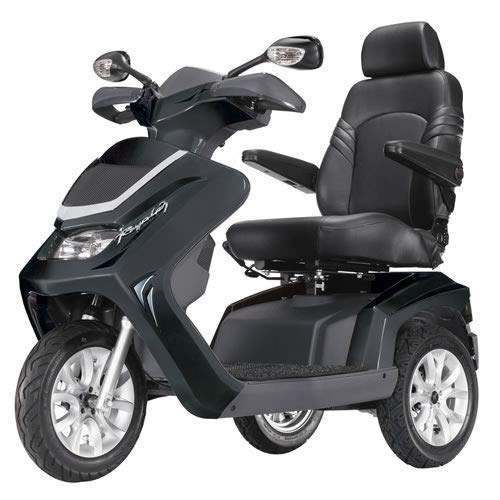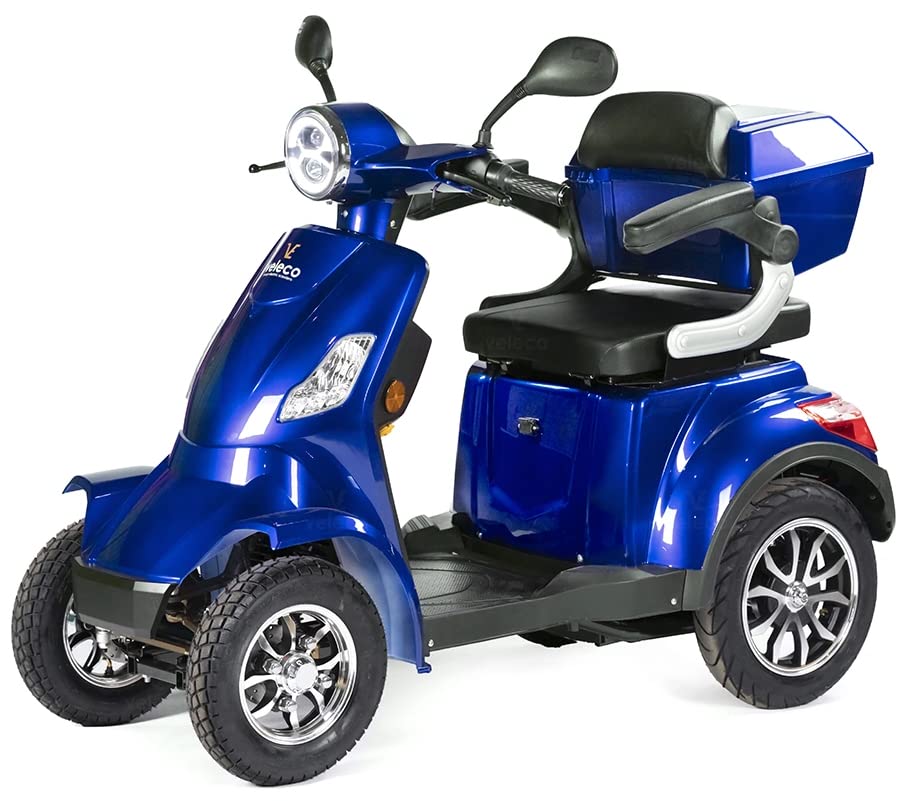What's The Reason Urban Mobility Solutions Is Fast Becoming The Hot Tr…
페이지 정보

본문
 Urban Mobility Solutions
Urban Mobility SolutionsCities face a number of challenges when it comes to combating air pollution, congestion, accessibility and sustainability. Urban mobility solutions that leverage advanced technologies can improve the living standards, boost economic vitality and reduce environmental impact.
However, the implementation of these solutions requires collaboration across the entire 4 wheel mobility scooter electric scooters ecosystem. It is essential to adopt an approach that is city-centric and focused on citizens. Partnering with cities, cross-industry stakeholders and Mercedes-Benz experts will result in a tailor-made solution to the specific requirements of each city.
Congestion
The challenges of congestion have been a central issue in urban mobility planning. The amount of time spent in traffic reduces productivity for cities and individuals collectively. Cities must weigh the need for new ideas in transportation with the consequences of a deteriorating infrastructure and a growing population.
Urban transportation systems must offer an accessible and safe way to move people around, while cutting down noise, pollution and waste. Additionally, cities must address the issues of parking congestion, traffic management and decarbonization.
There are many ways to manage traffic congestion, but to be effective everyone must take responsibility for the issue. It is essential to recognize that congestion isn't simply an inconvenience. It also has an economic impact on businesses and the economy overall. This is why it is important to utilize accurate, high-resolution data that shows day-today variations in travel times to determine the causes of congestion and the most effective solutions.
In addition to observing traffic conditions it is necessary to communicate to the public and businesses about how congestion affects their business. A clear and consistent message can increase awareness, educate the public about solutions, and motivate business leaders to promote strategies to reduce congestion.
A solution is to increase the capacity of roads. However, this can be expensive and is often subject to a range of restrictions that include the regulations for land use and environmental protection. Other options include promoting alternative modes of transportation, such as bikeshare programs and taxi hailing apps, or even the introduction of congestion pricing and carpooling. Parking systems can also be inefficient and contribute to congestion. Utilizing smart parking solutions can improve space utilization and shift the traffic away from congestion.
Aging Infrastructure
Cities and towns across the nation struggle to deal with traffic congestion and safety concerns due to the age of the infrastructure. As the volume of traffic continues to rise bridges and www.swingplanit.com roads are putting businesses and residents at risk and extending the time it takes to travel.
The deteriorating infrastructure for transportation is a challenge that cannot be solved with technology alone. The Oregon Department of Transportation has invested in new highways, transit projects, and safety improvements to ease congestion and modernize the system. These investments will help to ensure that the Portland region will continue to grow for generations to come.
With the pace of urbanization increasing the world is facing the challenge of finding affordable housing, and the need for sustainable mobility solutions rises. Innovative solutions like e-scooters and ebuses are in use to cut carbon emissions and limit climate change. These new mobility solutions help make it easier for people who are disabled which is a growing concern of many of our citizens.
To assess the impact of aging infrastructure on future urban four wheels electric mobility scooter solutions, this study uses systematic literature reviews (SLR) to analyze 62 scientific papers and forecast the evolution of various scenarios until 2030. The gradual growth of automated and shared mobility is expected to be the primary factor driving alterations. The scenario "Mine is Yours" dominates (35%) followed by "Grumpy Old Transport" (18%) and "Tech-eager Mobility" (17 17 percent). Modern legislation and policies are necessary for making these revolutionary electric portable mobility scooter solutions widespread and societally accepted.
Inequality
Urban mobility solutions need to not only improve the flow of traffic and reduce emissions, but they should also be able to reduce the amount of carbon dioxide and be economically and socially feasible for everyone. Transportation costs are typically the biggest household expense, and they can be disproportionately burdensome for those with low incomes. The high cost of car payments and insurance, fuel, and maintenance costs can be a major financial burden to families and keep them from obtaining employment or education as well as services. In addition, long commutes can have a negative impact on health and wellbeing of the residents.
Although public transportation can be an economical alternative to private vehicles however, many cities are not equipped with adequate infrastructure. The public transportation system is old and was designed to serve a much smaller population. It needs substantial investment to modernize. Additionally, a lack of funding and legacy technology can hinder the development of new services.
Congestion also can increase the amount of pollutants in the atmosphere and poses an illness risk to the population. Poor air quality can worsen respiratory conditions and reduce quality of life. By implementing a well-planned urban mobility plan the unnecessary congestion can be prevented by expanding and enhancing the existing infrastructure.
Increased capacity in public transport will cut down on travel time and make it more accessible to all people, including those disabled or infirm. It will also help reduce the burden on families who own expensive vehicles and free up valuable parking spaces.
The increasing use of alternative transportation methods can have an immediate impact on the level of inequality. As density increases within cities, Black-White and AAPI-White commuting inequality decreases, while women's commuting time declines relative to men's. This suggests that increasing density forces AAPIs to sacrifice similar wages for longer commutes, which then forces blacks to work farther away, and that women are less likely to get jobs that match their qualifications and abilities.
Air Quality
Air quality issues are growing more relevant because research has shown an immediate link between health and exposure to toxic pollutants. Traffic congestion, diesel and gasoline vehicle use and other factors can cause high levels of particulate (PM2.5 and PM10) and gases like nitrogen oxides, sulphur dioxide volatile organic compounds, and carbon monoxide. These pollutants can be harmful and can contribute to climate change.
Exposure to these pollutants can lead to heart attacks, lung irritation, asthma as well as delayed development in children, and impairment in cognitive function. In addition, they can contribute to ozone pollution as well as greenhouse gas formation, and the urban heat island effect which leads to hotter temperatures in cities.
Promoting active mobility and the growth of public transport can help improve air quality. Reduced emissions from urban transportation can also aid in achieving local, international and national climate change targets.
In this way smart mobility solutions could help commuters choose 4X4 electric mobility scooter vehicles and low-emission models. Additionally they can offer information on safe walking and biking routes. They can also promote ridesharing services, which help to reduce the number of cars on the road and the pollution that comes with it.
In a recent article we have simulated SUMPs' (Sustainable Urban Mobility Plans) impact on 642 European cities. Our findings demonstrate that SUMPs have a significant impact on modelled "urban background concentrations" of PM2.5 and NO2, with average reductions of these substances ranging from 7% to around 7 percent. It is important to note that these findings only take into account the emissions of the transport sector and urban background concentrations. In this study, SUMPs are not evaluated for other benefits, such as lower energy consumption or street level concentrations. Future studies should be able to consider these and other benefits.
Urban mobility solutions should be based on an ecosystem approach that involves multiple actors. They should take into consideration equity, technology and sustainability, all while being adapted to the specific environment of each city. While new technologies can be beneficial urban mobility systems, they must be able to integrate existing infrastructure, promote bicycle share and public transport schemes, and increase security.
Logistics is the process of moving goods and people in a city. It is the core of urban mobility. It is crucial for reducing congestion, maximizing time spent on commuting to work and enhancing accessibility to travel. The development of new technology like autonomous vehicles (AVs) have a direct effect on city logistics. It will also make the transportation sector more effective. It will eliminate the need for human driving, reduce fatal accidents due to driver error, and increase traffic.
Logistics is complicated by its numerous stakeholders. Each has their own goals, budgets, and legacy technologies. It's difficult to ensure the consistent execution of a project. It is also challenging to scale up and transfer solutions from one city into another since each has their specific requirements.
 To address these challenges, best folding Electric Mobility scooter for adults cities need to encourage technological innovation and develop smarter, more agile logistical operations that can adjust to the latest technological advances. This can be achieved through encouraging green freight management, integrating eco-friendly urban logistics planning into SUMPs and SULPs and examining the possibility of drones flying to transport people around the world. It is also essential to foster collaboration between public transportation agencies, private businesses and logistics service providers. This will help to optimize transit and allow the city to be more fluid, ultimately boosting citizens' overall quality of life.
To address these challenges, best folding Electric Mobility scooter for adults cities need to encourage technological innovation and develop smarter, more agile logistical operations that can adjust to the latest technological advances. This can be achieved through encouraging green freight management, integrating eco-friendly urban logistics planning into SUMPs and SULPs and examining the possibility of drones flying to transport people around the world. It is also essential to foster collaboration between public transportation agencies, private businesses and logistics service providers. This will help to optimize transit and allow the city to be more fluid, ultimately boosting citizens' overall quality of life.- 이전글Best Brand Refrigerator: A Simple Definition 25.02.07
- 다음글9 . What Your Parents Taught You About Good Fridge Freezer Brands 25.02.07
댓글목록
등록된 댓글이 없습니다.